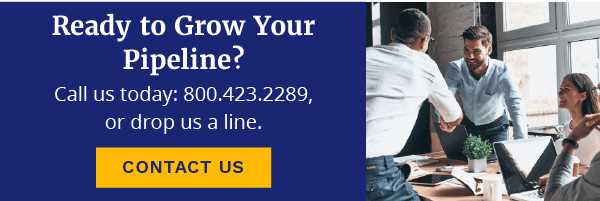Sales targets are always affected by the bigger picture. And this year has been … quite a picture indeed, leaving many sales leaders unsure how to approach planning for next year.
How do you set sales targets during a pandemic, or during any period of uncertainty, for that matter?
That’s what we wanted to know, so we spoke with our friends over at Sowa Tool & Machine Co. We sat down for a chat with Jesse Bonfiglio, Director of Product and Business Development. Here are his answers to some tough but frequently asked questions about setting sales targets during uncertain times.
Q. With so many unknowns going into 2021, how are you setting realistic sales targets for your sales team?
A. We’re changing the way we look at timeframes and customer segments.

Jesse Bonfiglio, Sowa Tool & Machine Co. Ltd.
Instead of budgeting for an entire year, we are looking at quarterly projections, or six months out at most. That shorter time frame improves the accuracy of our guidance and garners higher motivation among our sales team.
When it comes to customer segmentation, we are also narrowing our focus. We look for pockets of opportunity where we are well positioned to succeed. We rank them, pool our resources and tighten our focus to ensure strong execution.
For example, you may not be able to reach 500 distributors effectively with a sales message. But by segmenting, you can identify which of those 500 would be better engaged with a targeted marketing campaign rather than direct sales outreach. Since we don’t need feet on the street to reach this group, we save time and money on this segment, and we deploy our sales team on the accounts that need them. This approach demands that we listen and understand our customers’ individual needs. We are not looking to force products on every customer regardless of if they need it or not. This approach is also sustainable. As we solve our customers’ unique problems, we simultaneously endear ourselves to them and open the door for a long-term partnership that lasts beyond the current sales drive.
Q. What key stakeholders should be involved in sales planning?
A. The COO, sales leadership, finance and our sales reps.
It depends on the company size and structure. At Sowa, it includes sales and product leadership, finance, and our COO with input from our sales team. The combination of data trends and direct input from those closest to the customer provides the intelligence we need. A company of our size can effectively engage across each of these functional areas.
Q. How are you adjusting your sales budget if reps continue to work from home?
A. We’re investing in digital and reallocating people resources.
Like many others, we are speeding up the process by which we shift to digital selling. Travel and trade show dollars, for example, are being reallocated to the web and the associated technology to support it. The advancements in remote meeting technology also open a world of opportunities. This breaks through some of the traditional barriers to gaining face-to-face meetings, reduces costs and improves sales effectiveness based on the overall time commitment. The digital shift also changes the priority and sequence of our key projects. Enhancing our data and content to support the digital experience becomes paramount and jumps ahead of traditional field-based plans.
We are also rethinking our sales structure. The turnover in our sales team this year has been difficult. But rather than jumping to replace, we are assessing the type of roles best suited to meet the changing needs of our customers and business. Do we need more inside sellers? Do we need less managers and more individual contributors? Do we have enough marketing horsepower to support our digital plans? Do we have the means to capture, create and maintain data and content? Which geographies and customer segments are most important to us and do we have the people resources appropriately assigned?
One good thing about the 2020 business climate is that it has forced us to rethink everything. We’ve also been able to test drive some of our assumptions so we can evaluate them. While most of us are happy to close the book on this year, in the words of Churchill, “Never let a good crisis go to waste.”
Q. What other sales planning best practices or tips do you have for sales leaders?
A. Manage operational expenses and keep the company healthy.
Have you tried prayer? Aside from what we’ve covered already, I think it’s important that we start with getting our company financially healthy to weather the storm. Spending at the same rate is not sustainable. We’ve had to make some very difficult decisions to reduce our spending. Keeping operating expense as a percentage of revenue in check with the sizable sales declines our industry is dealing with is painful. But we have to make sure we have a company for people to come back to when we get out of this. Strong financial management has positioned us to say that we are going to come out of this stronger, regardless of how long it lasts…and we haven’t had to make massive layoffs to do it.


